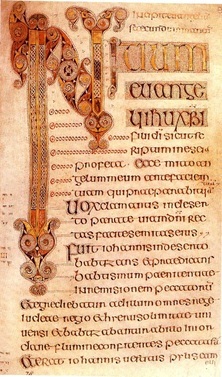Why The Irish Really Converted To Christianity
 âI grew up in a very Irish household and assumed that the Irish had always been Christian, but of course, thatâs not true. Until the 6th century most Irish people were pagans, worshipping a pantheon of Gods and Goddesses that controlled everything in the natural world, including their harvests. Their gods had served them well for thousands of years, so why did the Irish abandon them? In the book In Search of Ancient Ireland by Carmel MacCaffrey and Leo Eaton it states.
âI grew up in a very Irish household and assumed that the Irish had always been Christian, but of course, thatâs not true. Until the 6th century most Irish people were pagans, worshipping a pantheon of Gods and Goddesses that controlled everything in the natural world, including their harvests. Their gods had served them well for thousands of years, so why did the Irish abandon them? In the book In Search of Ancient Ireland by Carmel MacCaffrey and Leo Eaton it states.âWhen Patrick died 492 â or 496, depending on whichever version of the annals one prefers â he had been spreading Christianity among the Irish for more than sixty years. But Ireland had not changed much over that time. Pockets of Christianity existed around royal courts and local centres of power, where Patrick and other early missionaries had been successful, but the vast majority of the country was still pagan.â
I suppose we have to look at it from their point of view. Would you give up on the gods that were making your harvests plentiful? Of course not, youâd stick with what works.
 St Patrick - stained glass window in St. Benin's Church, Kilbennan, County Galway, Ireland
St Patrick - stained glass window in St. Benin's Church, Kilbennan, County Galway, IrelandI know everyone thinks Patrick converted the Irish to Christianity in the 5th century, but the Cult of St. Patrick wasnât developed until the 7th century with the goal of making the church in Armagh the central church of Celtic Christianity.
Why did the monks of Armagh choose Patrick? Iâm not entirely sure, but it could be because of his writings. His autobiography is called The Confession. When you read his words you get the impression that he was a very humble man, a sinner, like the rest of us, someone with which the common man could relate.
âMy name is Patrick. I am a sinner, a simple country person, and the least of all believers. I am looked down upon by many. My father was Calpornius. He was a deacon; his father was Potitus, a priest, who lived at Bannavem Taburniaeâ
 Lake IlopangoSo if it wasnât St Patrick and the other missionaries, what forced the Irish people to adopt this new religion? It seems that the answer lies in Central America. Around 536 AD a volcano under Lake Ilopango erupted causing a catastrophic global event. It spewed ash and dust in the atmosphere cooling the climate. This in turn caused widespread famine and disease, and plunged Europe into the Dark Ages. Recently, scientists have compared Ice core samples from the Greenland Ice sheet Project with the Irish AnnalsClick to read more about this project.
Lake IlopangoSo if it wasnât St Patrick and the other missionaries, what forced the Irish people to adopt this new religion? It seems that the answer lies in Central America. Around 536 AD a volcano under Lake Ilopango erupted causing a catastrophic global event. It spewed ash and dust in the atmosphere cooling the climate. This in turn caused widespread famine and disease, and plunged Europe into the Dark Ages. Recently, scientists have compared Ice core samples from the Greenland Ice sheet Project with the Irish AnnalsClick to read more about this project.
 The Book of Durrow believed to have been created in the late 7th centuryâThe Annals are sparsely written and hardly ever mention women, children, or peasants, just noblemen and notable events. Here are the entries following the Lake Ilopango eruption.
The Book of Durrow believed to have been created in the late 7th centuryâThe Annals are sparsely written and hardly ever mention women, children, or peasants, just noblemen and notable events. Here are the entries following the Lake Ilopango eruption.Annals of Ulster: â536AD Failure of breadâ
Annals of Inisfallen: â537AD Failure of breadâ
The plague that swept through Europe after the famine is also mentioned:
Chronicon Scotorum: â541AD A great mortality which is called Belefeth, in which Mobhi Clairinech, whose name is Bercan, 'prorectano poetae', perished.â
Even though the entries are meagre, for me, they put a human face on the suffering. The Irish starved. Their crops failed and their animals died, and then came the plague. They believed their gods had deserted them and converted to Christianity. It is after this period that the great monasteries are built and we see a flowering of Irish culture. This conversion wasnât as big a leap as you might expect. The Celtic Church adopted many of the pagan practices, and monks in this period were married men with families.
Scholars today believe that the Celtic Church with its monasteries that coveted the written word came into being because of a volcano in Central America.Join my blog tour and visit the other stops for more chances to win $20 Amazon gift card.a Rafflecopter giveaway
Published on March 15, 2016 02:00
No comments have been added yet.



